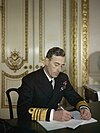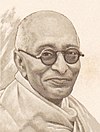The Union of India, also called the Dominion of India, was an independent dominion in the British Commonwealth of Nations between 15 August 1947 and 26 January 1950. It was created by the Indian Independence Act 1947 and was transformed into the Republic of India by the promulgation of the Constitution of India in 1950.
The King was represented by the Governor-General of India. However, the Governor-General was not designated Viceroy, as had been customary under the British Raj. The office of Viceroy was abolished on independence. Two governors-general held office between independence and India’s transformation into a republic: Louis Mountbatten, 1st Earl Mountbatten of Burma (1947–48) and Chakravarti Rajagopalachari (1948–50). Jawaharlal Nehru was Prime Minister of India throughout.
Formation
Since the late 1920s the Indian independence movement had been demanding Pūrṇa Swarāj (complete self-rule) for the Indian nation and the establishment of the Dominion of India and the Dominion of Pakistan was a major victory for the Swarajis. Nevertheless, the Partition was controversial among the people, and resulted in significant political instability and displacement.
The 1946 Cabinet Mission to India proposed ‘Union of India’ as a political unit that would encompass both British India and the Indian princely states. The Mission’s plan did not come into fruition due to disagreements over the powers to be held by the Union government. On 3 June 1947, it was decided that British India would be partitioned into two sovereign states, both dominions: Pakistan, consisting of Muslim-majority regions, and India, consisting of the rest. In deference to the wishes of Indian National Congress, it was accepted that the partition would be regarded as the Muslim majority areas splitting off from India.
The Partition of India took place on 15 August 1947, leading to the creation of Pakistan (which later split into the Islamic Republic of Pakistan and the People’s Republic of Bangladesh in 1971) and India.
Most of the 565 princely states within Indian territory acceded to the Dominion of India. The Hindu-majority Junagadh State located in modern-day Gujarat attempted to accede to Pakistan under Nawab Sir Muhammad Mahabat Khanji III, who was a Muslim. It was annexed militarily by the Indian government. Similarly, the State of Hyderabad sought to remain independent and was also annexed by India in 1948.
History
The newly created states of Pakistan and India both joined the Commonwealth, a platform for cooperation between the countries that had been part of the British Empire. Nevertheless, they soon found themselves at war that began in October 1947, over the contested princely state of Jammu and Kashmir. Pakistani militants entered the state, alarming Maharaja Hari Singh who appealed to India for military intervention, in exchange for the signing of the Instrument of Accession and annexation into India. The region is contested to this day, and two other Indo-Pakistan wars occurred as part of the Kashmir conflict.
List of heads of state
Monarch
| Portrait | Name | Birth | Monarch From | Monarch Until | Death | Relationship with Predecessor(s) |
|---|---|---|---|---|---|---|
 |
George VI | 14 December 1895 | 15 August 1947 | 26 January 1950 | 6 February 1952 | None (position created). Emperor of India before partition. |
Governors-General
| Portrait | Name (birth–death) |
Took office | Left office | Appointer |
|---|---|---|---|---|
| Governors-General of India, 1947–1950 | ||||
 |
The Viscount Mountbatten of Burma (1900–1979) |
15 August 1947 | 21 June 1948 | George VI |
 |
Chakravarti Rajagopalachari (1878–1972) |
21 June 1948 | 26 January 1950 | |
List of prime ministers
| Portrait | Name (birth–death); constituency |
Party (Alliance) |
Term of office | Elections (Lok Sabha) |
Council of Ministers |
Appointed by | |
|---|---|---|---|---|---|---|---|
 |
Jawaharlal Nehru (1889–1964) MP for Phulpur |
Indian National Congress | 15 August 1947 |
26 January 1950 |
— | Nehru I | Lord Mountbatten |
